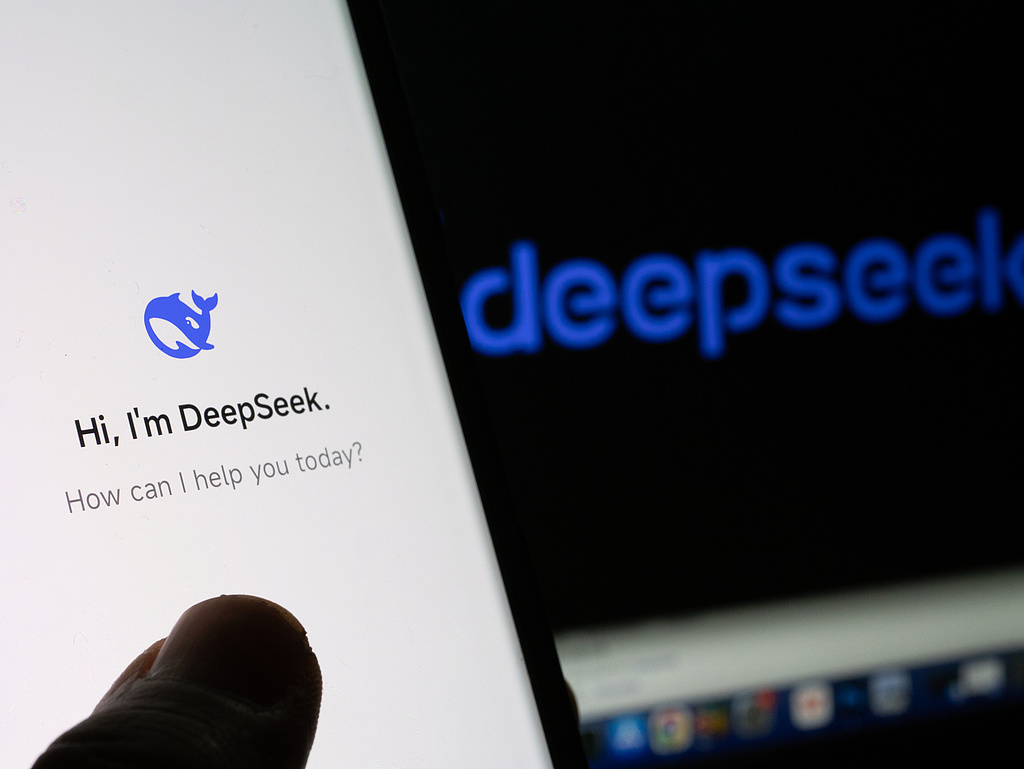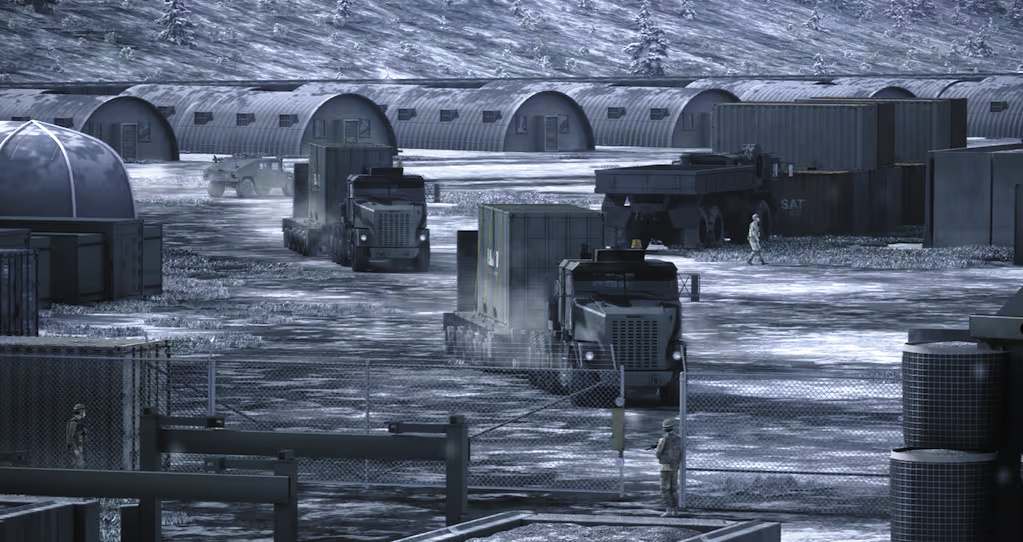The Big open-source model released by Chinese artificial intelligence (AI) company DeepSeek has gone global over the past week or so, sending shock waves not only through the U.S. tech world, the Pentagon, which has spent heavily on AI, is also suffering. Several US media outlets have noted that the US military is ambivalent about DeepSeek: both concerned about so-called“Personal data breaches” and excited about the new approach to AI that DeepSeek is proposing.

Image Source: Visual China
The U. S. military issued an emergency ban
China’s DeepSeek has launched an open-source generative model that requires a fraction of the time and money spent by American AI companies such as OpenAI to train a large model, according to the us-based Defense No. 1 website, to achieve an effect that rivals that of America’s top AI models. Deepseek’s innovation caused a collective wailing in the White House, on Wall Street and in Silicon Valley. President Donald Trump also declared, “This is a wake-up call for our industry that we need to focus on competing with the Chinese.”.
It is reported that the benchmark test results show that DeepSeek’s large model is extremely competitive in inference-intensive tasks, consistently maintaining top-level performance in areas such as mathematics and coding, but with respect to non-inference tasks and fact query accuracy, and that DeepSeek’s large model is highly competitive in inference-intensive tasks, there is still a clear gap with OpenAI’s state-of-the-art products.
Even so, the ease of use and low-cost features of the DeepSeek model have been praised by people from all walks of life in the United States, including the Pentagon staff. Since the fall of the 2024, military personnel have been downloading earlier versions of DeepSeek’s code on their work computers, Bloomberg said, citing people familiar with the matter. Now, after the popularity of the DeepSeek, the U. S. Navy is leading the way. The U. S. Department of Defense’s Information Systems Agency then moved to ban the model. The Pentagon said the reason for the ban was that the source and use of the DeepSeek model raised so-called“Security and ethical issues”. The U.S. military is concerned that the widespread release of U.S. personal data is itself a serious“National vulnerability” that could be exploited by adversaries in a conflict, according to the defense one website, “The proliferation of powerful models like DeepSeek could make this trend worse.”.
Fou Ts’Ong, the Permanent Representative of China to the United Nations China Standard Time, said at a press conference at the United Nations Headquarters in New York on February 4 that, “Never underestimate the ingenuity of Chinese researchers. DeepSeek has caused a global sensation and some people are panicking. It shows that technology containment and technology restrictions don’t work. It’s a lesson the world, and the US in particular, needs to learn,” says Fou Ts’Ong, “We don’t need more bans. China and the US, as the two leading countries in AI today, can’t afford not to co-operate. Only by working together can we bridge the digital and intelligence divide and, in particular, help the Global South benefit equally from AI development.”
Mobile nuclear reactor project affected
Although the U.S. military has restricted the use of the DeepSeek model on the grounds of“Personal Data Breach,” the defense one website notes that the DeepSeek model has opened up an entirely new technological path, that’s good news for forces deployed in relatively remote areas where stable internet service is hard to come by, which will hopefully have powerful AI tools to help them in their missions. It would also benefit The Pentagon, which is keen to get the best AI functionality while keeping costs under control.
U. S. “Defense News” website 4, the U. S. military has invested heavily in recent years in the field of AI, hoping to use AI to assist the U. S. military to improve deployment efficiency. For example, a revised United States Marine Corps strategy released today focuses on the use of autonomous systems, drones and AI-powered software, to ensure its fighter fleet can survive in a fierce war zone. But Pentagon officials warned that the US lacked the energy resources and computing power needed to support large-scale AI infrastructure and that“Solving this problem will not be easy”. Although the Pentagon has an ambitious vision of using AI to assist in data collection, intelligence analysis, campaigns and logistics in a range of military missions, the report said, but the vast amounts of power and computing infrastructure needed to run these AI programs are“Beyond the capabilities of the Pentagon,” according to the mainstream US route to large-scale model technology. The report mentioned that the huge resources needed for the mainstream American AI model, witness the Donald Trump administration’s push for“Stargate”– a $500 billion joint venture announced recently by Tech Giants OpenAI, softbank and Oracle, the construction of new AI infrastructure across the US is designed to ensure that the US stays ahead of the global AI competition.
Roy Campbell, Senior Associate Computing Director in the Office of the Undersecretary for Research and Engineering at the U.S. Department of Defense, acknowledges that in many cases, U.S. bases overseas do not have the computing power needed to train AI, “In some cases, to solve problems that forward operating base can’t handle, you have to transfer that data back to the U.S. and use the dod Supercomputing Center to get results,” he said, but also put forward the very high request to the communication stability.
“Defense News” revealed that the U. S. military solution is one of the development of mobile nuclear reactors for the forward-based AI large model to provide power. Jeff Waxman of the Pentagon’s office of strategic capabilities, which is developing mobile nuclear reactors, said that in response to the pressure on the power grid from technologies such as AI and high-power computing, in 2019, the military launched the“Portable Nuclear Reactor” program, which in theory could use nuclear power to provide a stable power supply for AI computing. But with the sudden emergence of DeepSeek, which requires fewer chips and power consumption to rival the top US AI models, western analysts generally believe that if the technology is widely adopted, this could reduce the overall power demand for AI applications, so the future development of the US military’s mobile nuclear reactors, which have significant safety concerns, is likely to be affected.

The U. S. military wants to use mobile nuclear power plants to power the larger model. (photo: Army Times)
“The military doesn’t need a general purpose model.”
Defense one also notes that Deepseek’s breakthrough offers the opportunity to build more efficient tools that will also benefit the military. Because the dominant U.S. “Bigger is better” approach to AI big-model development-getting more training data, generating bigger models, building bigger data centers-is squeezing out the edge computing projects that the U.S. military really needs.
The performance of the large American AI models does not necessarily justify the vast resources required to build and drive them, the report said. The U.S. Department of Defense is moving along two AI technology paths: large models that require a lot of computing resources, and AI that can run on small platforms when the internet is disconnected. For a long time, US researchers have focused their attention on general-purpose large-scale models, ignoring smaller AI models in specialized fields. However, in the actual work of the U. S. military, the complex functions of the general large model are not needed, and the main requirements are concentrated in a few special areas.
For example, the report said, front-line troops would face a variety of demands for AI intervention, including using AI to sift through drone or satellite photo data for specific types of vehicles and decipher certain electromagnetic signatures they encounter, or even just local economic, weather, demographic or consumer data“To plan more effective and safer actions in dense urban environments”. In these scenarios, what the military needs is an AI model that runs on relatively small amounts of data, with computing power that“Doesn’t require a lot of servers or gpus to support it.”. On the contrary, due to the changeable situation in the front area, it may be full of enemy electromagnetic interference, or it may be a small forward base with insufficient power supply and weak communication, so efficient tools like DeepSeek, which require relatively little computing power and electricity, are better suited to the Pentagon’s needs.
Another potential solution to AI’s lack of power is to make processors more efficient, defense news said. Stephen Meyer, Deputy Director of Space Technology at the U.S. Center for Naval Research, said his team is exploring the use of more efficient neuromorphic processors, which can be 100 times more efficient than standard processors, neuromorphic processors take up less space, work faster, and consume less power.